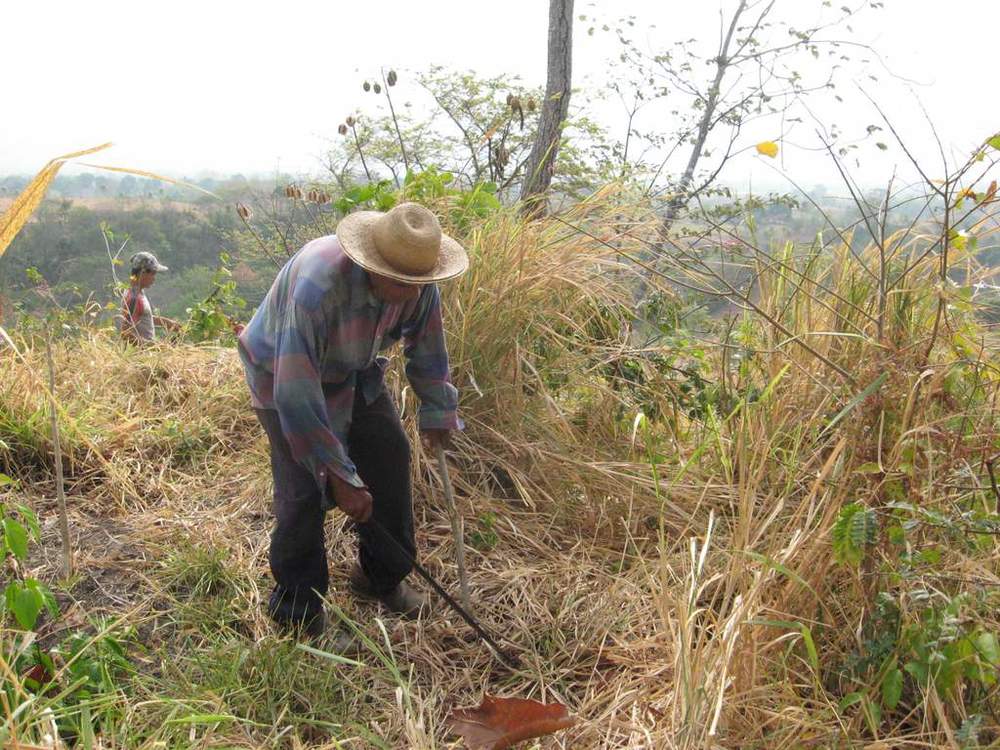Reforestation Strategies in Land Occupied by Foreign Grasses
/
The paper, “Responses of transplanted native tree species to invasive alien grass removals in an abandoned cattle pasture in the Lacandon region, Mexico” by Román-Dañobeytia et al., found that successful reforestation on these lands is possible using natives species, but without continued suppression of the non-native grasses, high mortality rates may occur depending on the tree species.
Our experience confirms this finding. Whether it’s aggressive non-native grasses or just thick undergrowth, our native tropical hardwoods require frequent suppression competition to ensure low mortality rates. As the trees grow taller and start to shade out the undergrowth beneath them, suppression of competition becomes less important because the trees no longer need to compete for sunlight.
One practice used in the study to suppress the non-native grasses was burning the land before planting. Smallholders use slash and burn practices like this in the region where we work, but we decided to only clear the undergrowth and grasses with machetes before planting. When exercised in a controlled manner, the burning can return nutrients to the soil and reduce competition for the young trees, but the frequent rains in Panama erode away a lot of the nutrient-rich topsoil. Therefore, when we prepare land for planting our trees, we simply let the cleared undergrowth decompose in place and add its nutrients more gradually.
We’ve seen that certain species we planted compete better with the non-native grasses. Dalbergia retusa, in Panama called Cocobolo, has done the best with mortality and growth in our plantations with the aggressive non-native grass. It grows quickly, naturally bifurcates, and also fixes nitrogen, which gives it the ability to compete with the grasses while also recuperating the soils.
None of the native species in the study overlap with the species we plant, nor is the non-native grass the same, so a direct comparison with the study isn’t possible. However, we have found that, as in the study, suppression of non-native grasses is necessary for minimizing mortality rates. Additionally, the authors point out the need for maintaining the grasses during the dry season to reduce the drying out of the soil, something we have experienced, too.
We hope that researchers continue to pursue studies on this. Reforestation was the focus of the International Society of Tropical Foresters’ conference, held at the Yale School of Forestry and Environmental Studies where we presented earlier this spring.
If you’re interested in learning more about reforestation using native species and its challenges, you can listen to the recorded conference presentations. Additionally, you can find more academic papers on the subject, especially about Panama, on our Studies and Analysis page.



